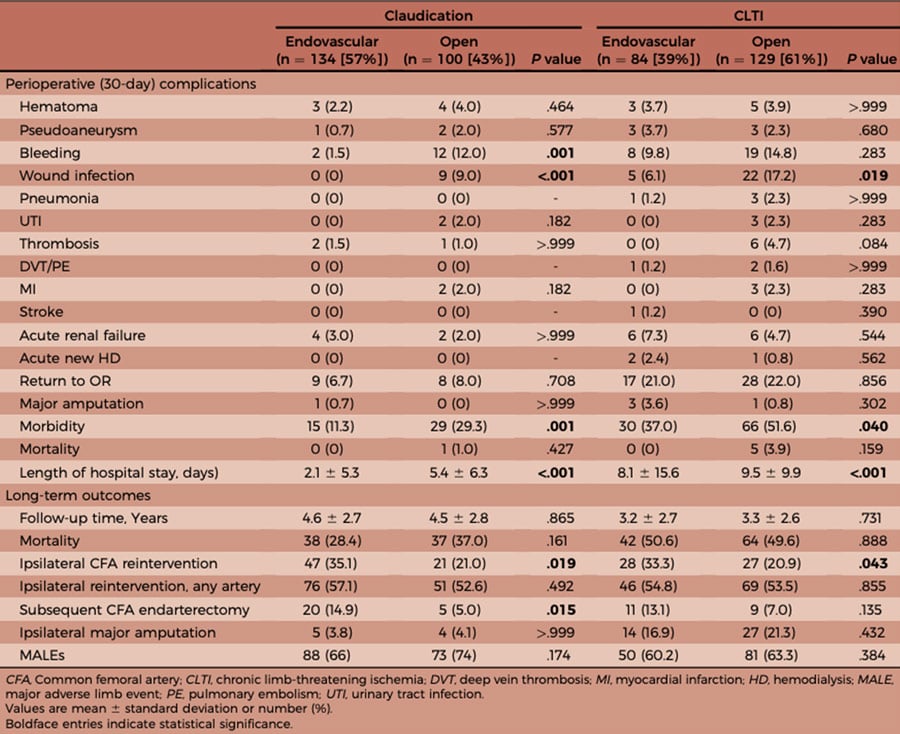Open and endovascular treatment of the common femoral artery in a tertiary care center
Selected in Journal of Vascular Surgery by Hortense Chalret du Rieu
This study compares open vs. endovascular revascularisation for CFA disease, focusing on reintervention rates and MALES-free survival. It analyses perioperative complications (hematoma, bleeding, infection) and long-term outcomes, including mortality, major amputation, and reintervention needs.
References:
Authors: Nicholas Wells, Addiskidan Hundito, McKenzie R. Tuttle, Dana Alameddine, Edouard Aboian, Isibor Arhuidese, Uwe Fischer, Juan Carlos Perez-Lozada, Raul J. Guzman, Cassius Iyad Ochoa Chaar.
Reference: Volume 79, Issue 6e45-e46June 2024 DOI: 10.1016/j.jvs.2024.03.032
DOI: 10.1016/j.jvs.2024.03.032
Read the abstractObjective:
The objective was to compare perioperative and long-term outcomes of open vs. endovascular revascularisation for lower limb CFA disease, with a focus on reintervention rates and MALES-free survival.
Study:
Single-center retrospective study based on electronic medical records of patients treated between 2013 and 2020 at Yale New Haven Hospital, involving vascular surgeons, interventional radiologists, and interventional cardiologists.
Population:
The study included patients who underwent lower limb revascularisation involving the common femoral artery (CFA). Patients with aneurysmal diseases, trauma, or procedures requiring femoral access for other indications were excluded. Cardiovascular comorbidities were taken into account, and patients were stratified based on the indication for revascularisation, distinguishing between those treated for claudication and those with chronic limb-threatening ischemia (CLTI).
Endpoints:
Perioperative outcomes included complications occurring within 30 days of the procedure, such as hematoma, pseudoaneurysm, perioperative bleeding, surgical site infection, pneumonia, and urinary tract infection. Long-term outcomes focused on mortality, major amputation, and the need for reintervention.
Outcomes and conclusion:

The study found that endovascular revascularisation was associated with a higher rate of reintervention, while open surgery led to more significant perioperative complications and longer hospital stays. For patients unfit for open surgery, endovascular therapy provided acceptable short-term outcomes. These findings highlight the need for improved patient selection to optimize treatment strategies.
Get the latest clinical cases and breaking news delivered straight to your inbox!


Comments: